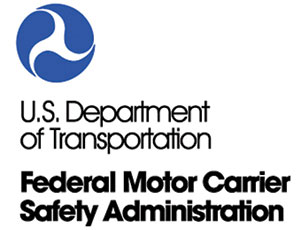Senior Reporter
FMCSA Seeks Input on Request to Post Hair Drug Tests to Clearinghouse

[Stay on top of transportation news: Get TTNews in your inbox.]
The Federal Motor Carrier Safety Administration is seeking comment on a request by an alliance of large motor carriers for an exemption that would permit the carriers to report “actual knowledge” of a truck driver’s positive hair drug test to the agency’s Drug and Alcohol Clearinghouse.
The carriers, who belong to a group called The Trucking Alliance, have drug tested tens of thousands of drivers using both hair and urine samples, but claim the hair testing method is far more successful in detecting lifestyle drug users who don’t belong behind the wheel of a truck.
Currently, the only allowable drug test method for drivers and other federal employees in safety-sensitive jobs is using urine samples. Positive drug tests using hair samples are not currently permitted to be posted to the FMCSA’s Clearinghouse database that alerts carriers to drug test failures by name.
Although FMCSA said it does not currently have statutory authority to grant such an exemption, the agency is nonetheless seeking public comment on the request through Sept. 23.

Siamak Azmoudeh of SkyBitz discusses the rise of the smart trailer and why the industry standard is shifting toward more sensors, more data and more business intelligence. He joins host Seth Clevenger to explain the evolution of trailer telematics. Tune in above or by going to RoadSigns.ttnews.com.
The Trucking Alliance includes the following motor carriers: Cargo Transporters; Dupré Logistics; Frozen Food Express; J.B. Hunt Transport Inc.; KLLM Transport Services; Knight Transportation; Maverick Transportation; Schneider; Swift Transportation; U.S. Xpress; and May Trucking Company.
The Department of Health and Human Services, the agency responsible for determining the method of federal drug testing, has yet to issue a final hair testing rule that was approved by Congress and signed into law in December 2015.
HHS has not indicated when it will issue a final rule, which would then need to be adopted by the U.S. Department of Transportation.
Public comments from the trucking industry were overwhelmingly negative regarding a September 2020 proposed HHS rule since it did not allow hair testing to be a “stand-alone” test. The proposed rule would permit carriers to test employees or prospective employees using hair samples, but positive test results would still need to be validated with a subsequent urine test.
In April, FMCSA rejected an earlier request by the Alliance for a similar exemption to amend the definition of an employer’s “actual knowledge” of drug use to include hair samples and allow reports to the Clearinghouse.

The Alliance has long been lobbying regulators to permit the use of hair samples for drug testing drivers in lieu of urinalysis.
“Despite the enormous growth in technology since 1991, [urinalysis] has remained the only drug testing method permitted by the FMCSA,” the Alliance said in its request. “But [urinalysis], largely due to the unobserved nature of the collection method, is known to be less reliable than other drug testing methods. In contrast, hair testing is reliable and accurate, and its use by motor carriers would improve public safety by reducing the number of safety sensitive personnel who are at risk of being impaired by controlled substances.”
The Alliance also has said the most significant vulnerability in urine testing is in the collection process because the person collecting the sample is unable to observe the supply of urine.
“Simply put, hair testing eliminates this vulnerability by allowing the collector to observe the hair sampling from the test subject,” the group has said.

Woodruff
With 37,000 employees, J.B. Hunt, a member of the Alliance, has been hair testing drivers and prospective drivers since 2006, Greer Woodruff, senior vice president of safety, security and driver personnel at J.B. Hunt Transport, told Transport Topics earlier this year.
J.B. Hunt ranks No. 4 on the Transport Topics Top 100 list of the largest for-hire carriers in North America.
In public testimony at the June meeting of a federal drug testing advisory board, Woodruff said as of the end of March that 191,972 company drivers have submitted to both a urinalysis and a hair test since J.B. Hunt began using the hair method.
“Our experience clearly shows that a hair drug test is more reliable and accurate at identifying regular drug use than a urinalysis,” Woodruff said. “For example, of the 7,159 applicants who have tested positive for drug use with a hair test, nine out of 10 passed their urinalysis. Over the past 15 years J.B. Hunt has had zero cases challenging the results of a hair test.”
Want more news? Listen to today's daily briefing below or go here for more info:

